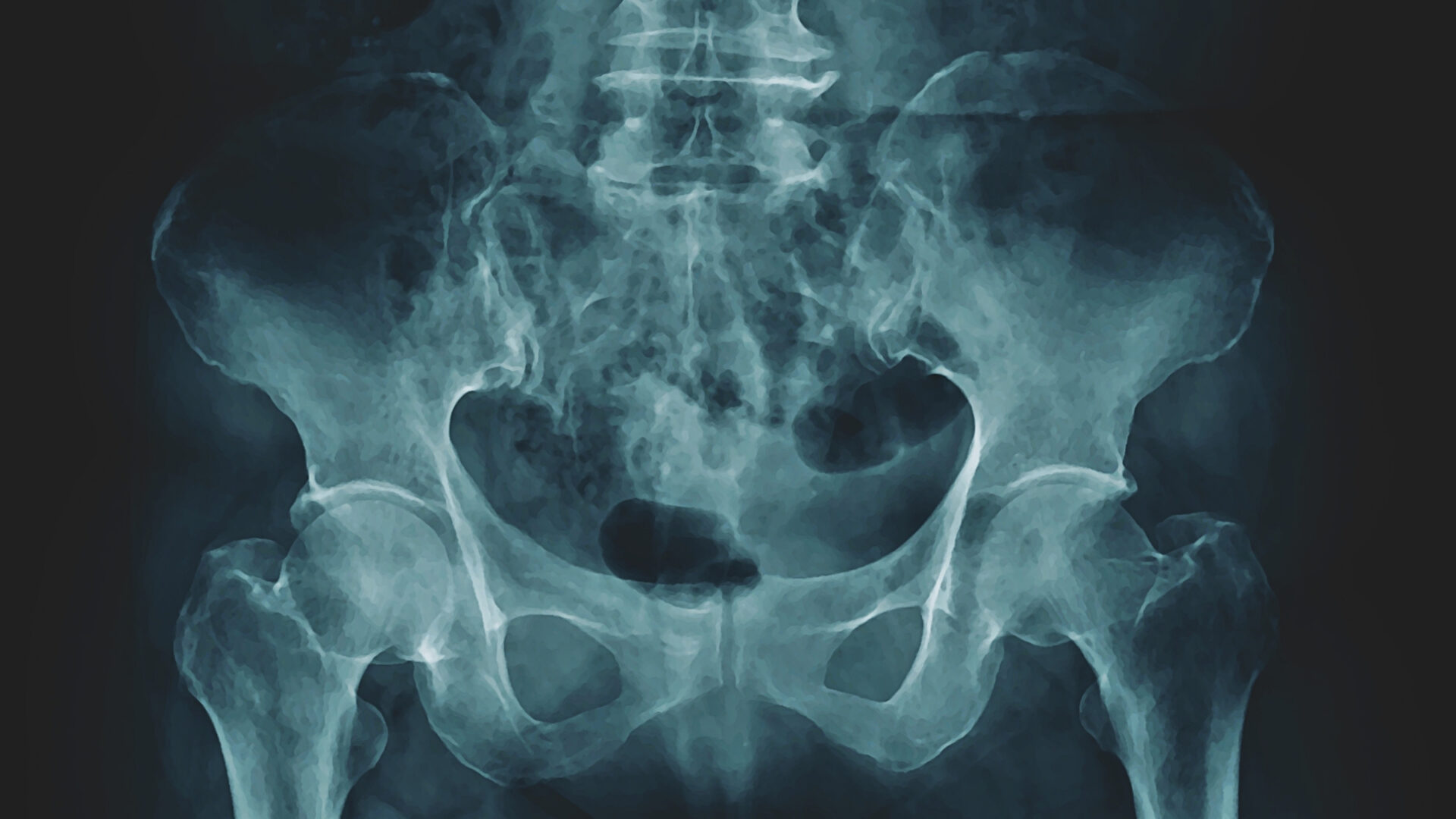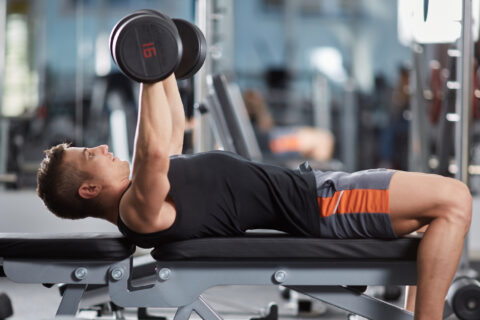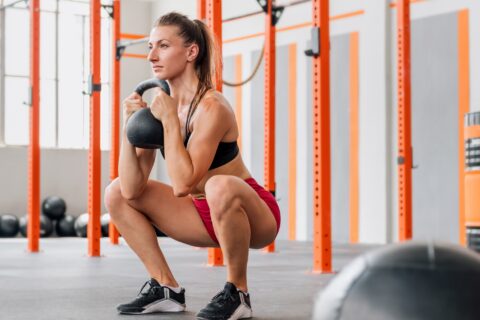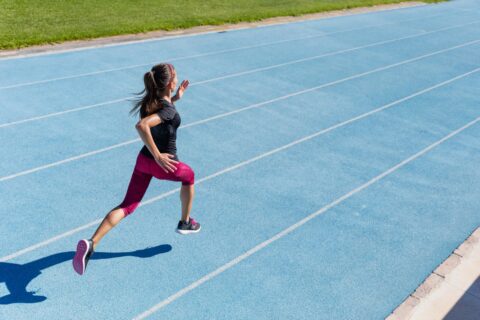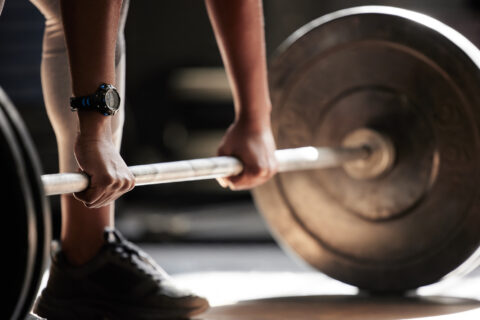If you’re a cyclist, you’re likely above average on most health metrics. But high bone density—which is a coveted metric that protects you from potential bone breaks and mobility issues as you age—doesn’t appear to fit that trend. Studies have shown that cyclists may not always have great bone health, including a 2023 study that found bone health in professional cyclists was negatively affected after just one season. [1,2]
Let’s break down what the study found and answer two questions: Is that really true? And how should cyclists change their training?
Cycling and bone health study
Martínez-Noguera et al. start by confirming what other studies have found: Cyclists tend to have lower bone mineral density (BMD) than other sports because the activity is non-weightbearing, and the nutritional and sweat demands of cycling could also play a role in diminishing participants’ bone density. [1]
The authors note that most studies to date have been cross-sectional as opposed to longitudinal; this means that while most agree cyclists have lower BMD in general, we don’t know exactly how a cyclist’s BMD changes over time due to cycling.
The study followed 18 professional male cyclists (14 Caucasian, 4 Hispanic) competing in several UCI WorldTour events in two pre-season assessments, one in 2018 and one in 2019. A dual-energy X-ray absorptiometry scan was performed to get an accurate measure of BMD along with bone mineral content (BMC), bone area, fat mass, and fat-free mass. These measurements were broken down into different body areas (arms, legs, trunk, ribs, pelvis, and spine).
The study posits that statistically significant (p<0.05) changes were found between the 2018 and 2019 years in the arms and the spine, in both BMD and BMC. [1] This can lead to an increased risk of injury and osteoporosis for cyclists, and the authors suggest that direct interventions should be planned for cyclists to avoid bone deterioration.
Study limitations
While the study’s authors claim they were using a different, longitudinal approach, there were only two touchpoints with each participant. It is difficult to determine how long the pros had been experiencing a decline in bone health, and when it may have started. A preferable approach would be to follow the athletes over the course of several years.
We should also acknowledge that age, sex, weight, nutrition, and genetics all play extremely important roles in determining overall bone mineral density, most of these metrics were not tracked with the participants. Bone mineral density does naturally go down with age, albeit slowly, but this is usually seen in older populations. [3] Women were also not included in this study, who are already at a higher risk of osteoporosis than men.
Significance of BMD loss
Let’s assume that cycling was the reason for the changes in bone mineral density noted. What about effect size? Let’s take a look at the data.
| 2018 | 2019 | Time p-Value | Effect Size | |
|---|---|---|---|---|
| Arms | 1.11 (0.08) | 1.10 (0.07) | 0.102 | 0.407 |
| Legs | 1.31 (0.10) | 1.30 (0.11) | 0.017* | 0.504 |
| Trunk | 0.868 (0.07) | 0.851 (0.07) | 0.012* | 0.489 |
| Ribs | 0.678 (0.04) | 0.663 (0.04) | 0.003* | 0.814 |
| Pelvis | 1.05 (0.11) | 1.02 (0.10) | 0.001* | 0.811 |
| Spine | 1.01 (0.10) | 1.03 (0.11) | 0.081 | 0.278 |
| TOTAL | 1.19 (0.08) | 1.18 (0.08) | 0.061 | 0.410 |
The p-values with the asterisks are noted as statistically significant. Take a look at the absolute values from 2018 and 2019, though. The shift in the BMD of the legs changed from the average of 1.31 (g/cm2) to 1.30. So, while this results in a “statistically significant p-value,” the effect size and increase in risk to a cyclist going through a season does not change significantly.
This is important to keep in mind. If your likelihood of developing a condition goes from, say, 0.003% to 0.005%, your risk is still incredibly low. Without more information and a larger sample size, it’s hard to understand the magnitude of the effect size from this article.
Other questions to ask
The authors describe how there was an “overall downward trend in BMD” between the two years, citing a p-value of 0.061. This is not statistically significant, even for that sample size. They also show some “downward trends in T-score” (T-scores are used to compare bone mineral densities against healthy adult norms) and note that “5 of the 29 cyclists had osteopenia in 2018, and this figure increased to 6 in 2019.” Interesting stuff, but make a note: This is the first and only time they mention 29 cyclists—where did they come from? Possibly a typo, but if not, this indicates only a minute shift in the odds of a cyclist developing osteopenia from 2018 to 2019.
So are cyclists at a greater risk of bone density loss?
The authors did observe that all pro cyclists examined had bone mineral density levels that were below healthy levels as established by the North American Health Survey, and that professional cyclists in general had worse bone health than amateurs. Compared to the controls, the T-score and Z-score values for the pros were significantly lower.
So we can agree with the literature that, as a cyclist, you likely have lower bone density compared to your running (and even walking) counterparts. We can also agree with a portion of the discussion brought up in this article: that participating in grueling endurance events on a bike puts you at higher risk of adverse changes in your bone health. That being said, the reason why and the magnitude of that effect on your bone health requires more research and a larger study with a more robust protocol.
Mitigating the negative bone health effects of cycling
Regardless of study limitations, it is a great idea for any athlete in unidirectional endurance sports (i.e., performing repetitive motions in one plane) to work on safeguarding their bone health as a part of their training regimen. There is substantial evidence that the following will improve bone mineral density and/or bone mineral content.
- Resistance training. Lifting heavy things is one of the best things you can do for bone health. Progressively overloading your muscles and exerting force beyond your bodyweight alone will improve the demand—and, thus, the subsequent remodeling—of your bones. [4,5] Consider adding some heavy resistance into your programming twice a week if you’re not already strength training.
- Plyometrics (in multiple planes of movement). You might be thinking, No problem, I run twice a week—I have this covered! Let’s be clear: running does not count as a plyometric in my book. In fact, runners also don’t have great bone mineral density. [3,6,7] Like cycling, you are performing a motion in one plane of movement. And, like cycling, the amount your bones are loaded is the same in each step. Your bones get used to this, so you need to shake things up…literally.
- To promote BMD, ballistic movements are fantastic—but make sure they are multi-directional. Whether that means taking a kickboxing class or jumping around with twists and turns, make sure that the way you land is varied.
Low bone mineral density and poor bone health can lead to an increased risk of bone fractures and stress injuries. [3] By incorporating resistance training and plyometrics into your weekly routine, you’re challenging your bones to new stressors that will fortify your bone health and keep you strong in the long term.
References
- Martínez-Noguera, F.J.; Alcaraz, P.E.; Ortolano-Ríos, R.; Marín-Pagán, C. One Season in Professional Cycling Is Enough to Negatively Affect Bone Health. Nutrients 2023, 15, 3632. https://doi.org/10.3390/nu15163632
- Barry DW, Kohrt WM. BMD Decreases Over the Course of a Year in Competitive Male Cyclists. Journal of Bone and Mineral Research. 2007 Dec 10;23(4):484–91.
- Lowry, Maryn E., “Bone Stress Injuries in Collegiate Distance Runners: Review of Incidence, Distribution, and Risk Factors” (2019). Graduate Student Theses, Dissertations, & Professional Papers. 11424.
- Hetland ML, Haarbo J, Christiansen C. Low bone mass and high bone turnover in male long distance runners. J Clin Endocrinol Metab. 1993;77:770–775.
- Effects of Resistance Exercise on Bone Health.Hong AR, Kim SWEndocrinol Metab (Seoul). 2018 Dec; 33(4):435-444.
- Herbert AJ, Williams AG, Lockey SJ, Erskine RM, Sale C, Hennis PJ, Day SH, Stebbings GK. Bone mineral density in high-level endurance runners: part A-site-specific characteristics. Eur J Appl Physiol. 2021 Dec;121(12):3437-3445. doi: 10.1007/s00421-021-04793-3. Epub 2021 Sep 12. Erratum in: Eur J Appl Physiol. 2021 Oct 19;: PMID: 34510274; PMCID: PMC8571133.
- Brahm H, Ström H, Piehl-Aulin K, Mallmin H, Ljunghall S. Bone metabolism in endurance trained athletes: a comparison to population-based controls based on DXA, SXA, quantitative ultrasound, and biochemical markers. Calcif Tissue Int. 1997;61:448–454.
